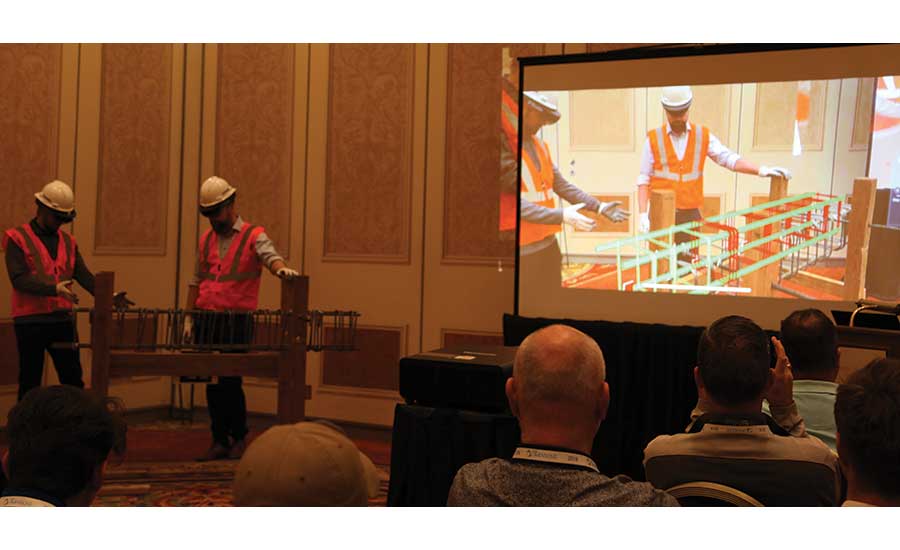Coming off of big-ticket purchases of construction software firms eBuilder and Viewpoint earlier this year, Trimble has rolled out a broader vision of how the constructible model can be maintained across a project’s lifespan.
With a focus on ensuring 3D models drive work on the jobsite, Trimble vice president Roz Buick outlined the Trimble Constructible Process during the company’s biennial Dimensions user conference in Las Vegas in November. “We see it as an industry best practice,” Buick says. “We want to liberate the data and make sure BIM is not limited to white-collar users. Construction is done in the field in 3D, so taking BIM to the field is logical.”
Bridging the gaps between the model and the site was a major theme at Dimensions. “[Roz Buick] talks a lot about the constructible model, but really, every project we do starts with a good constructible model,” said Matt Henke, VDC manager at Southfield, Mich.-based contractor Barton Malow, who presented at the conference. “We design all of our jobs during the award phase or preconstruction, but we are designing based on how we’re going to build it in the field.” Henke says that his firm has found added benefits from modeling out details that seem unimportant but end up providing crucial information to crews during construction.
Working from a constructible model is a good match for Viewpoint’s “office-team-field” approach, Buick tells ENR. As an ERP provider, Viewpoint can help Trimble find links between costs, scheduling and the model, she says. “Our commitment is to eliminate the disconnect between preconstruction and project execution,” says Buick. “These acquisitions will help us bridge that gap.”
Trimble has begun to incorporate eBuilder into its system as well, placing Trimble’s project and program management suites, ProjectSuite, Proliance and Prolog, under eBuilder’s oversight.
Getting the model on the site sometimes takes a literal approach, and Trimble is still working to bring the Microsoft HoloLens “mixed reality” headset into the construction workflow. While efforts to use the HoloLens on jobsites for QA have had mixed success, the headsets have seen some use in fabrication shops to make sure rebar matches the 3D models.
Tobias Svenberg worked with Trimble on a HoloLens pilot while a manager at Swedish-based firm Consolis. Using the headset to view a 3D model while assembling rebar on a jig was difficult at first, but after a few false starts, Svenberg saw promise in building directly to the model. “Our designers spend 5% to 25% of their time making 2D drawings from the 3D model,” he explains. “With [the HoloLens] we can avoid errors that are sometimes introduced during that [process].”



Post a comment to this article
Report Abusive Comment